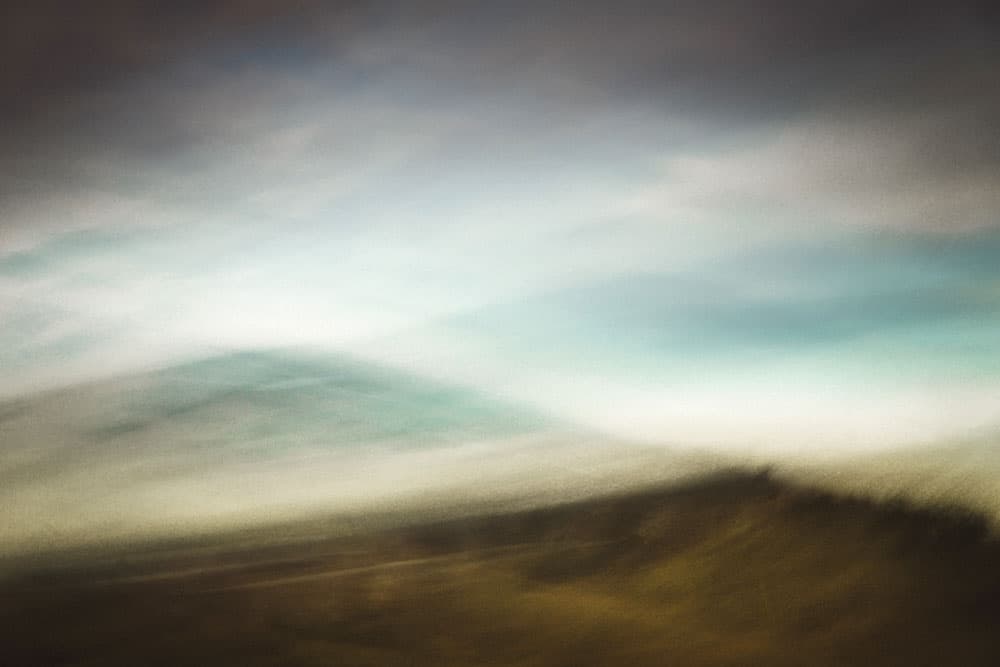
One of the only images shot outside Nottinghamshire. This was taken from a small hill near Bedford. Canon EOS 6D, 24-70mm, 3.2sec at f/7.1, ISO 200. Credit: Chris Dale
My local Nottinghamshire landscape isn’t the most exciting for a photographer, especially when you’re used to seeing epic vistas posted on social media every week from people who can travel a lot or live with the Scottish Highlands on their doorstep. It’s easy to get jealous and blame your surroundings for a lack of inspiration. But while there are plenty of forests and woodlands where I live, which I love to shoot, I wanted to create something different.
Over the past year or so, having tried some abstract techniques including multiple exposures and intentional camera movement (ICM), I began toying with the idea of making an altered landscape from my local area. I completed a couple of small projects last year and focused on the idea of creating something out of nothing. But I wanted to do something bigger this time: I wanted to transport the viewer to one of those epic mountain vistas.
For me, the best thing about this style of photography and this project idea in particular is that the location isn’t important. It is much more accessible for me to be able to create images with nothing more than the smallest of hills or some gently rolling fields, and I am not so reliant on weather conditions.
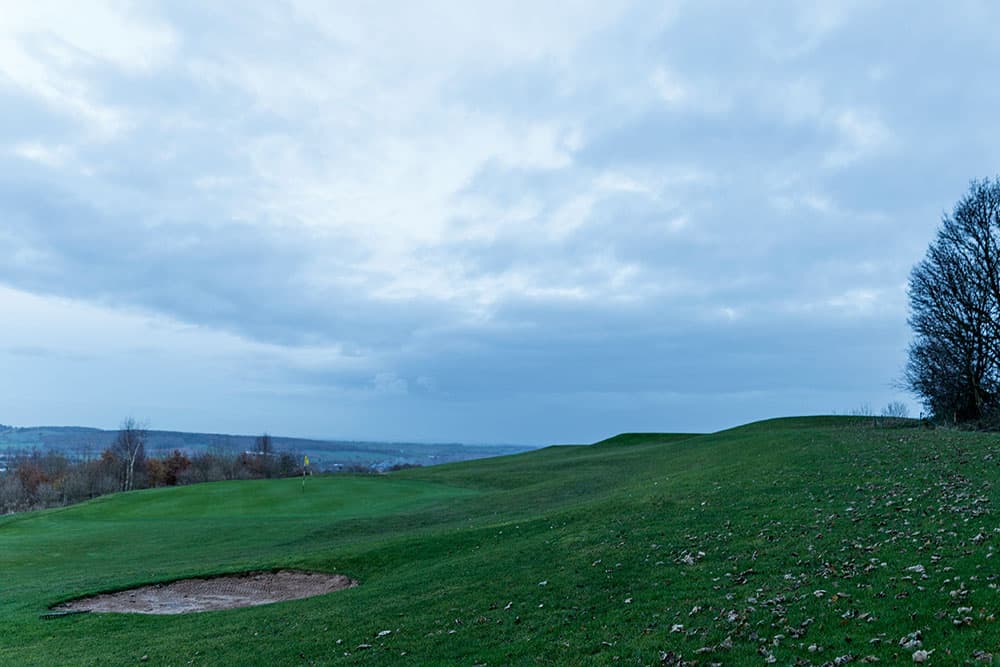
The starting point for many of my images. Credit: Chris Dale
Getting started
The project really started one evening in late November when I just missed a bit of fantastic cloudy light and didn’t want to come home empty-handed. So I started trying some ICM techniques on a nearby golf course. There were a few small mounds near a green and I decided there and then that I was going to turn them into a big mountain scene. Nothing beats getting out there and experimenting, but you need to have an idea of what you’re trying to achieve with ICM or you’ll just get a blurry mess.
All the images in this project are single exposures with nothing added or removed in post. I am not against doing this, but I don’t particularly enjoy the workflow and don’t think it would be the right approach for this project. Instead, I experimented with contrast and colour adjustments.
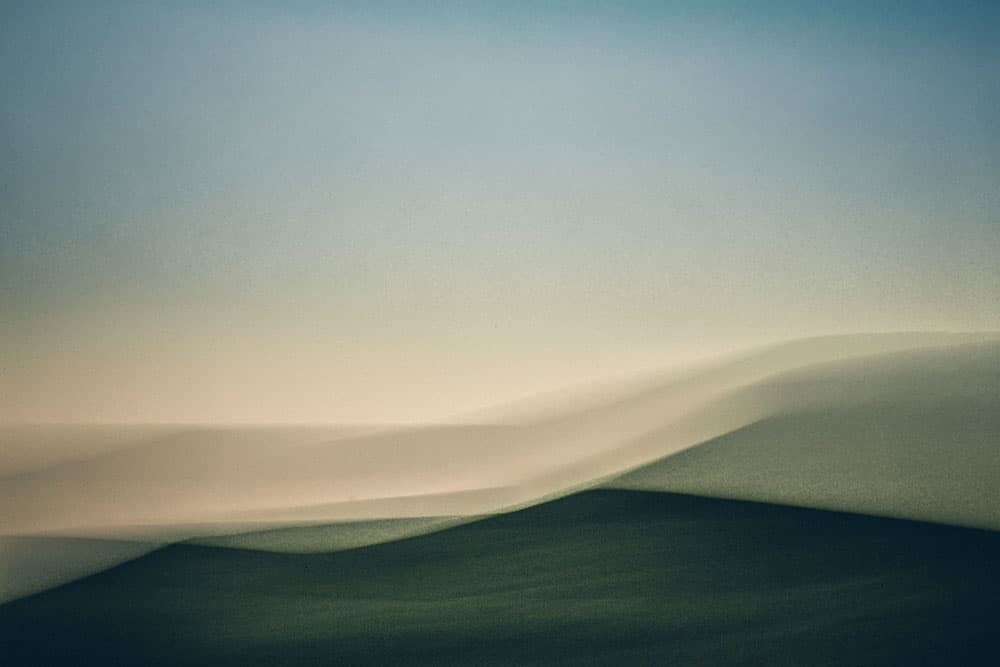
A clear winter sky gives a colder feel. You can still recognise small hills from the golf course shown below Canon EOS 6D, 70-300mm, 1/2sec at f/45, ISO 100. Credit: Chris Dale
After loading the shots onto my laptop and beginning to process them, I started to think that I really had something here. There are no rules in editing this type of photography, and I’m often quite bold and heavy handed, making big adjustments to match the feel I had in mind when I was out capturing them. You almost always need to inject some contrast back in to give the images a boost.
Lightroom presets are great for project work and particularly handy for ICM images, as many scenes can be overlooked at first glance but can really come alive with basic processing. Quickly applying this to all the photos before going through and flagging the ones you want to work on further can help you.

Another from the local golf course that provided almost half of the project images. Canon EOS 6D, 70-300mm, 1/2sec at f/45, ISO 100. Credit: Chris Dale
A project comes together
There were a few images from that first evening that became the basis of my new project, which was to be titled ‘Mountains from Molehills’. Over the following few weeks, I concentrated on trying to make more and barely took a ‘normal’ photo. The difficulty is in keeping enough variety – it is easy to end up with a lot of very similar images with this technique, but I wanted to create different landscapes in different conditions, with a range of weather, light and mood. For this, you’re still reliant on getting out at the right times. Even though you’re shooting abstracts, the light still defines many aspects of the shot; for example, you don’t want too much contrast between sky and land, so bright days are best avoided, and you can clearly see the difference between photos taken with clear skies or dramatic cloud.
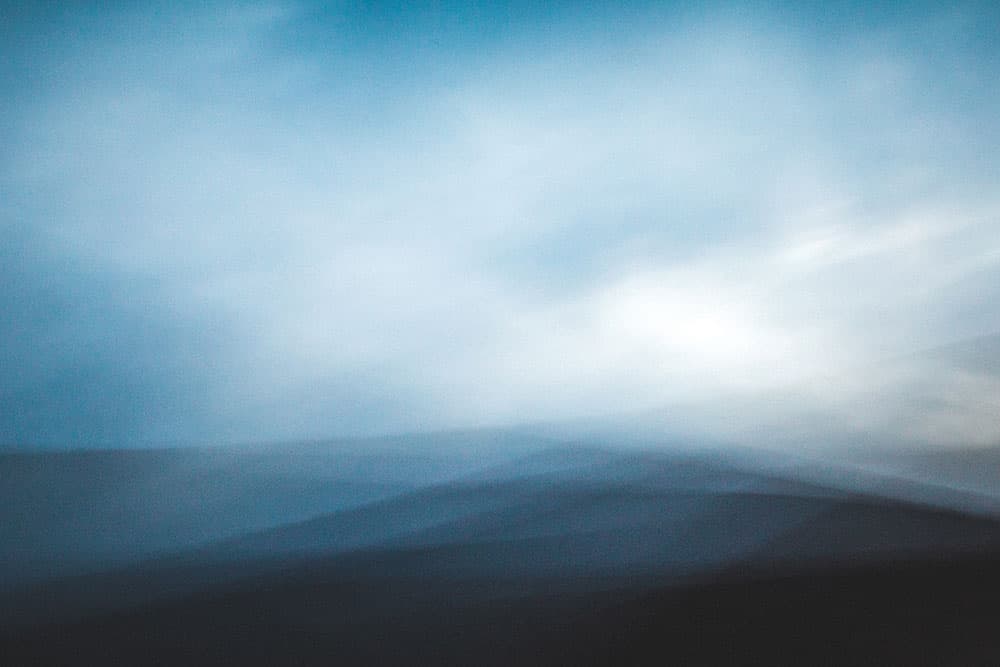
This and the image below were taken minutes apart in the same location but have a very different feel. Canon EOS 6D, 24-70mm, 3.2 seconds at f/6.3, ISO 640. Credit: Chris Dale

The graphic look here was created by using more abrupt movements. Canon EOS 6D, 24-70mm, 3.2 seconds at f/6.3, ISO 640. Credit: Chris Dale
After spending a couple of months on the project I finished with 15 images, which achieve what I wanted from an imagery point of view as well as helping me to look at my local area with fresh eyes.
Chris’s top tips for intentional camera movement

Kit for intentional camera movement
I use a Canon EOS 6D with a Tamron 24-70mm lens, but any camera and lens combination will work. On brighter days, a neutral-density filter is handy to get longer exposure times. I have a 10-stop ND filter but found variable ND filters are a good, affordable alternative offering far more control.
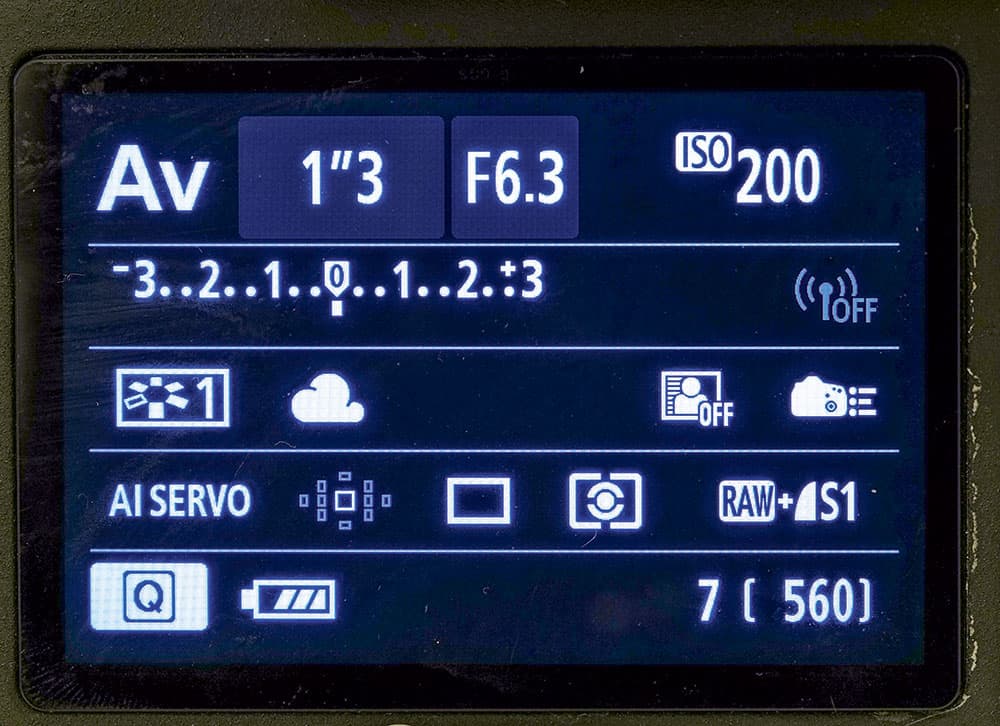
Camera settings for intentional camera movement
The technique works best in overcast weather, which means you won’t necessarily require any filters to lengthen the exposure time. With a narrow aperture and low ISO, I could achieve an exposure of 1-3 seconds while angling the camera back and forth to try and make a series of slopes and ridges.
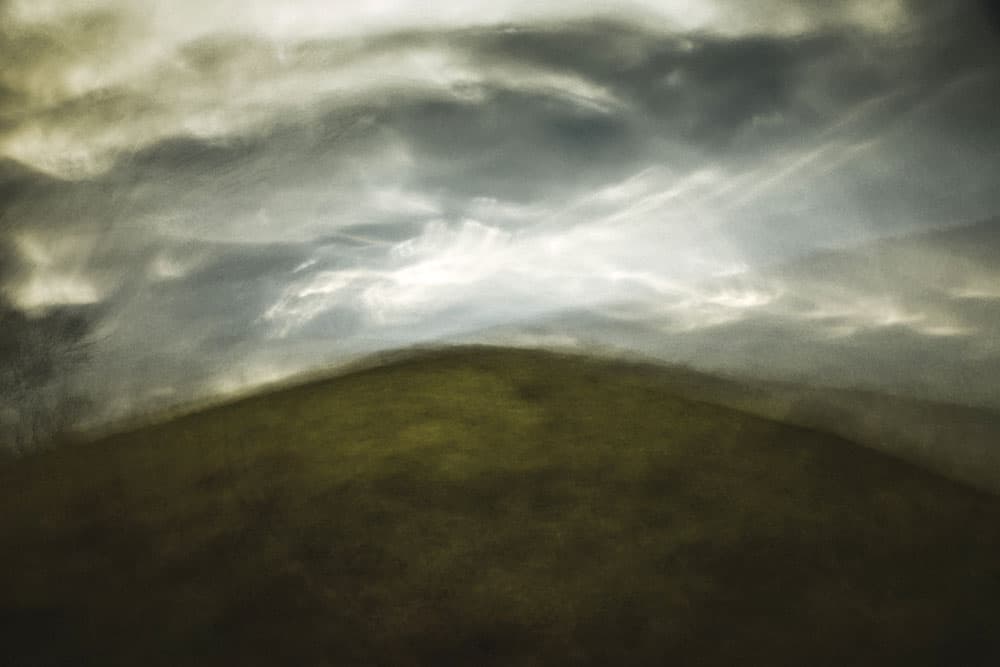
Experiment
The pauses are as important as the movement during an exposure. Holding your camera in one position for varying lengths of time within the exposure will give more or less de ned shapes that will help create the impression of layers of hills receding into a distant haze. It’s all about experimentation to see what works.
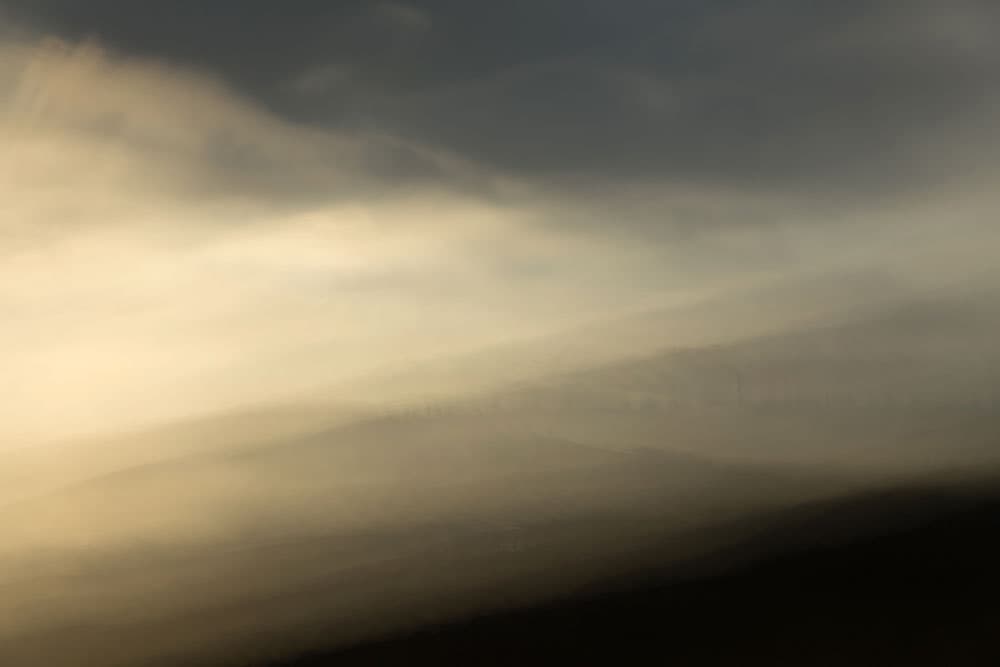
Be patient
Intentional Camera Movement (ICM) requires a lot of trial and error, so keep snapping away, honing the best types of movements and exposure times. The success rate can be pretty low – around one in 40 perhaps for me. It’s important to shoot a lot and don’t be too quick to delete things while out in the field.
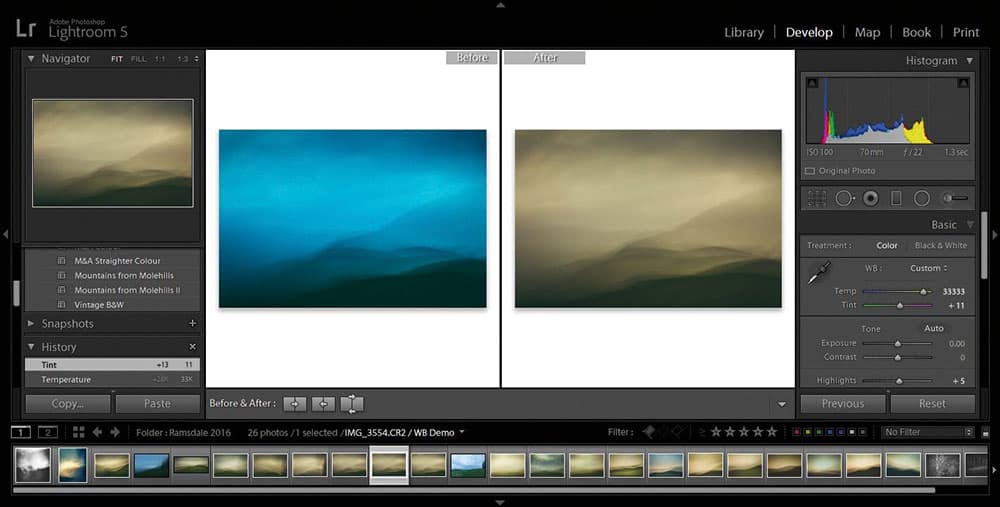
Post-production
After some basic exposure adjustments in Lightroom, I usually go on to experiment with the white balance and split toning to get the colours I envisioned. This is then followed by gradients, vignettes and local adjustments to help pull out the mood and any details I feel should stand out more.
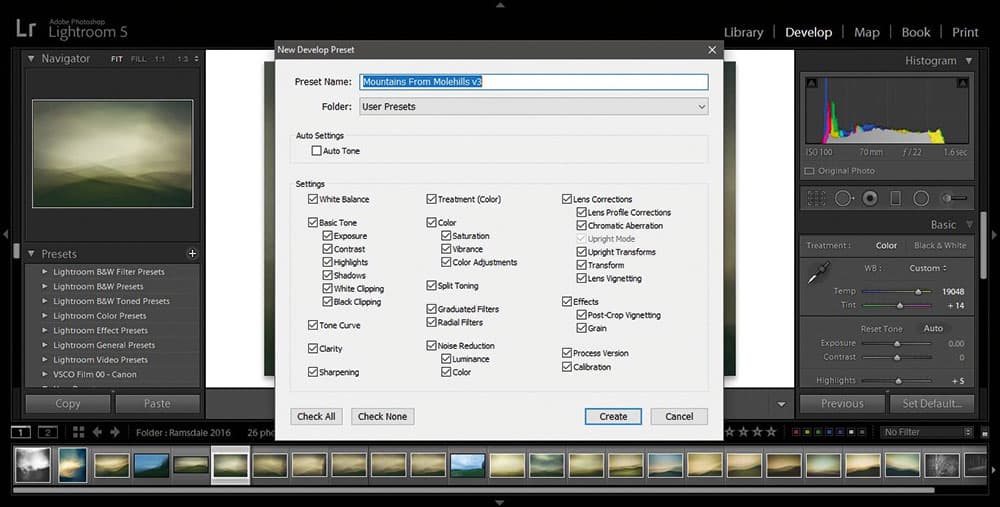
Presets
Lightroom presets are great for project work; you’ll often make a number of similar adjustments to the images to achieve a consistent look and feel across the series. Saving some of these into presets can reduce the repetition and get you quickly to a good starting point.







